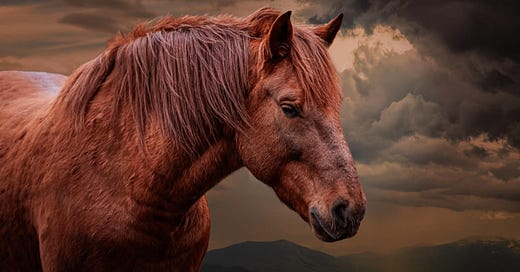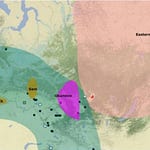Horses have been essential to human societies for thousands of years. Their origins trace back to the evolution of equines and specifically, the wild horses that roamed the North American continent before the Ice Age. While the horses became extinct in the Americas due to the glacial period, many had earlier escaped through the now submerged Bering land bridge into Eurasia, and populated the vast Eurasian steppes. After the melting of glaciers the global temperatures rose, and new vast grasslands emerged providing ample territories for grazing across the Steppe. Humans had already been hunting horses over the glacial period, yet domestication would follow much later in the Early Bronze Age.
Over time, horses evolved from their wild ancestors to become more suitable for domestication and riding. The first semi-domesticated horses were herded and used primarily for their meat, but also for their milk, bones and leather. However, it was not until the emergence of fully domesticated horses that riding and chariotry became possible. This breakthrough allowed for the rapid acceleration of mobility and played a critical role in human migration and the global spread of rideable horses.
The use of horses for transport, in particular, marked a turning point in human history. The considerable gain in mobility and distance had profound effects on land use, migration, trade, and warfare. The acceleration of mobility through horse riding played a crucial role in the spread of peoples, cultures, and empires throughout history. The success of military campaigns, trade and commerce, and migration can be attributed in large part to the use of horses as a mode of transportation.
The Pontic-Caspian Steppe is a vast area that covers an area of 994,000 km² (384,000 sq mi) in Central and Eastern Europe. It extends from northeastern Bulgaria and southeastern Romania through Moldova, Ukraine, and the Northern Caucasus of southern Russia, and into the Lower Volga region of western Kazakhstan, to the east of the Ural Mountains. This region is part of the larger Eurasian Steppe and is characterized by its temperate grasslands, savannas, and shrublands biome The Pontic-Caspian Steppe has been home to various civilizations throughout history, including the Proto-Indo-European speakers, who are believed to have developed the Indo-European languages and the domesticated horse.
In the early societies in the central Eurasian steppe, horses proved more efficient and essential for human subsistence. There, where the grass was free and ubiquitous, the horse people thrived – and did fairly well at pillaging their non-nomadic neighbors and civilisations. The horse-powered populations, technology and cultures of the Steppe spread rapidly across Eurasia, dramatically changing the course of human evolution for the following millenia.
By the first millenium CE, horse-related technology had progressed to a point where horses had become much more integral to human societies – and especially to warfare. The development of a horse collar and larger, more docile breeds led to an miniature agricultural revolution, as horse power finally became more efficient than ox power for plowing fields. Their necessity for both plowing fields and mowing down infantry made them ubiquitous throughout the medieval world.
However, as warfare evolved and technology advanced in the 20th century, horses became less important on the battlefield. The development of motorized vehicles replaced the need for horse-drawn carriages and cavalry units. Their role in warfare and trade has been largely replaced by more advanced technologies such as airplanes and automobiles.
In modern societies, horses are mainly used for sport and leisure activities such as horseback riding and racing. Despite their diminished role in modern times, the domestication and spread of horses were instrumental in shaping human civilization and changing the way we move and trade goods. Without the horse, it is difficult to imagine how human mobility, diffusion and overall evolution would have progressed over the past millennia.













Share this post